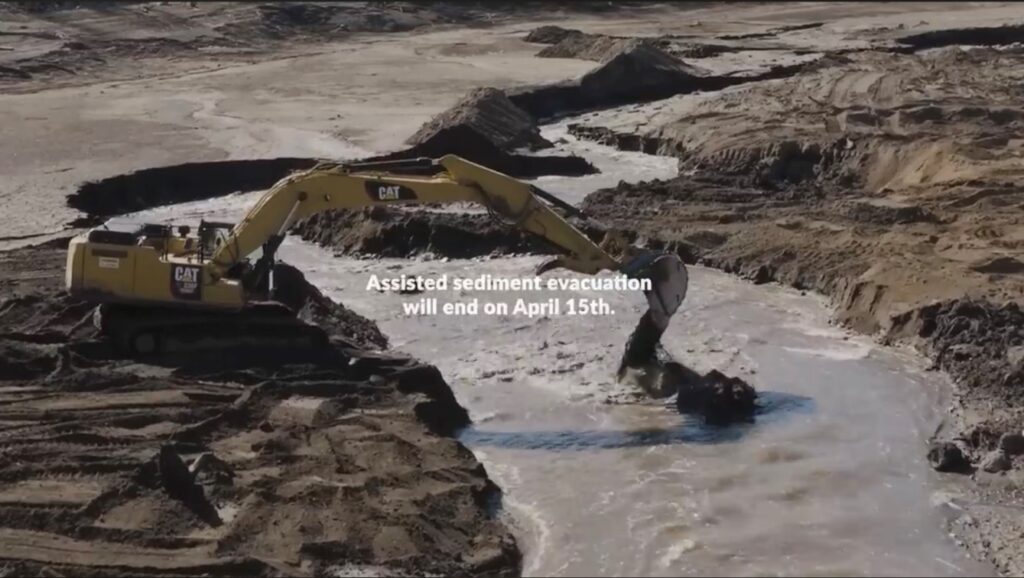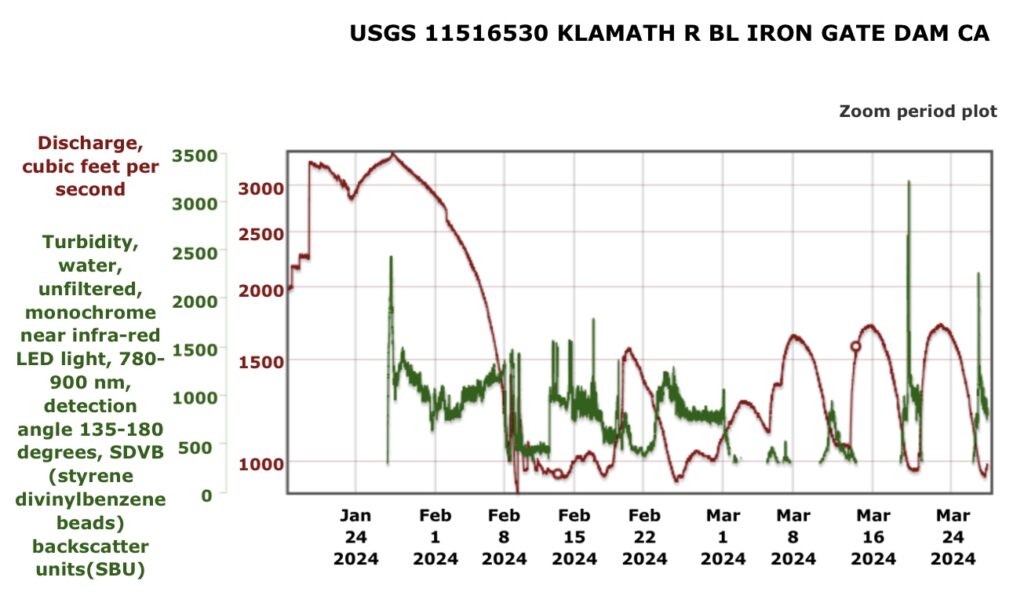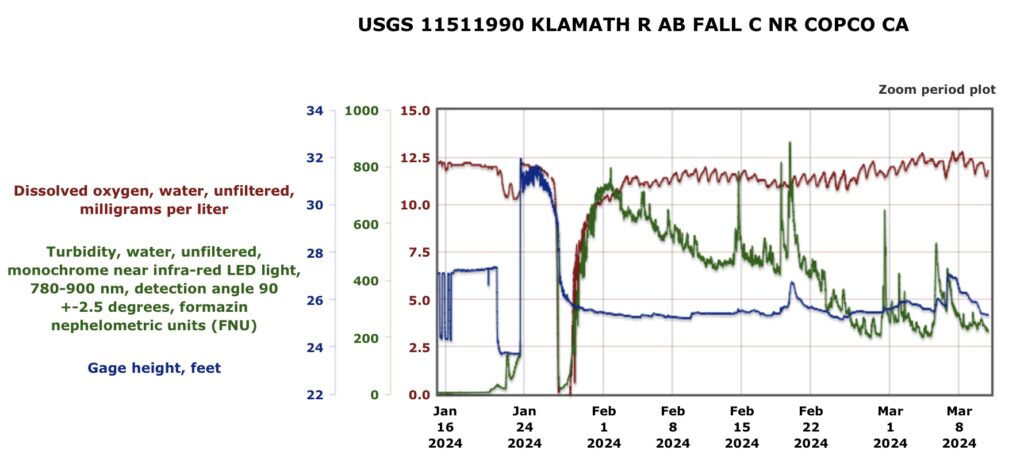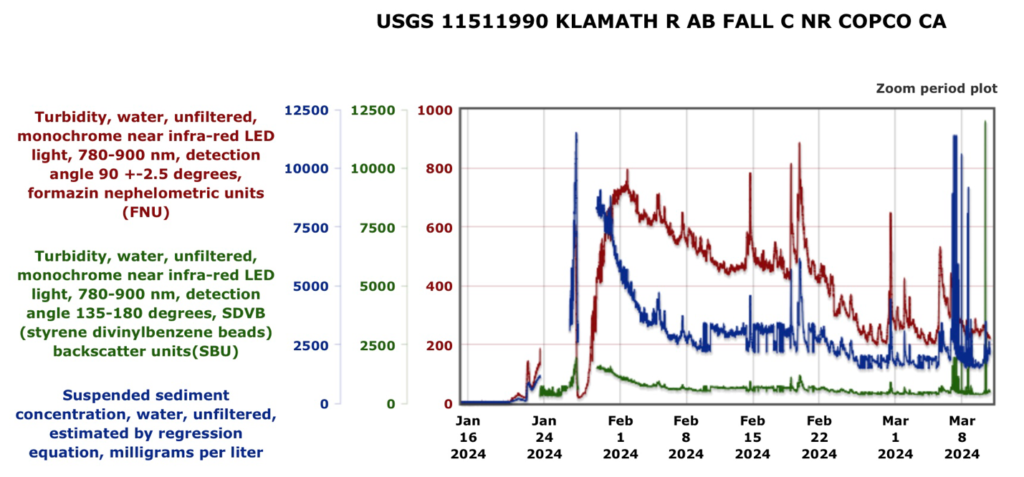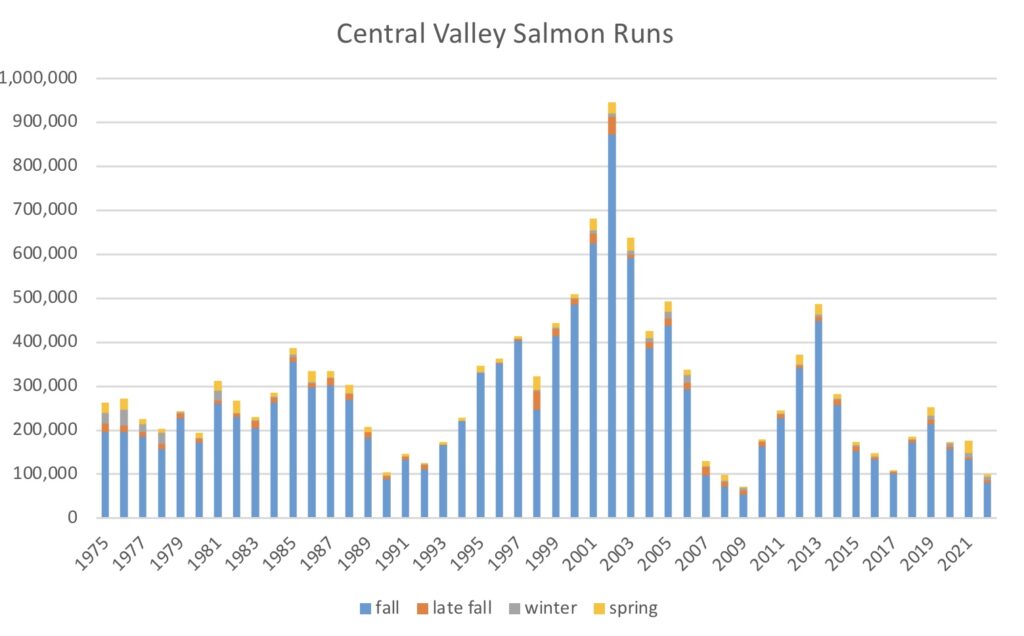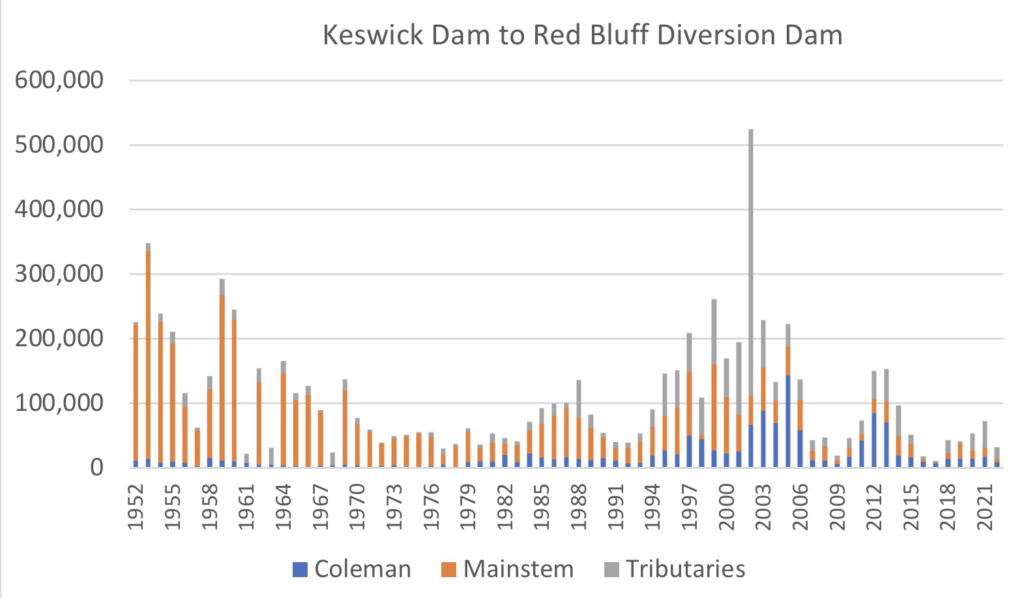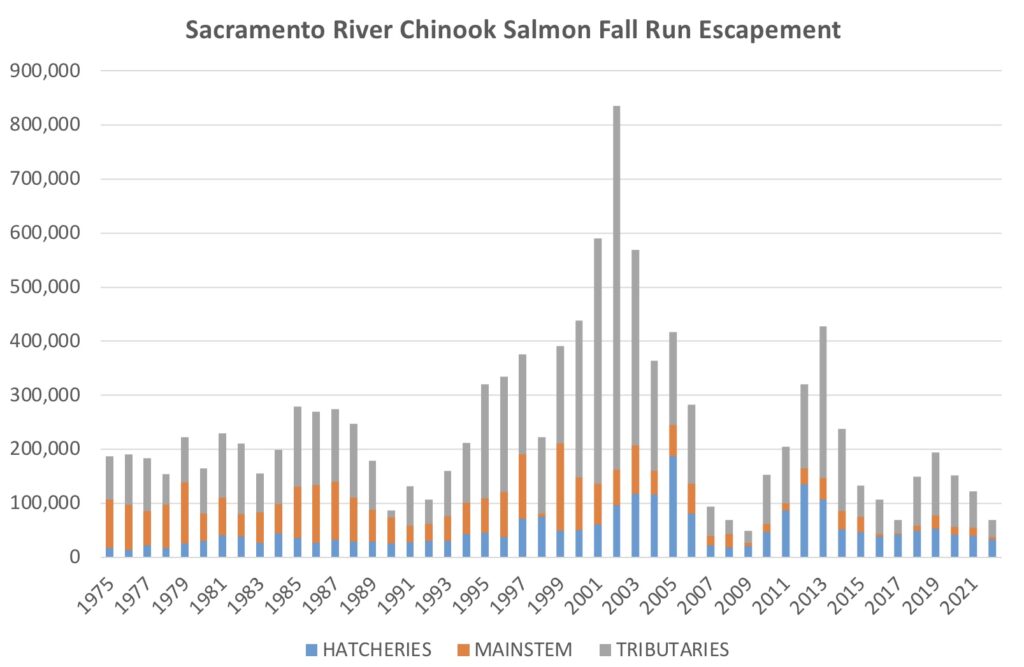After dam removal, the plan for recovering Klamath River salmon and steelhead is relatively straightforward.
Oregon is going to focus on watching to see how steelhead repopulate the upper watershed and on having a more active role in developing spring-run Chinook salmon populations. Without an existing spring-run stock, Oregon will try establishing one by out-planting stock from California’s Trinity River Hatchery.
California will focus on recovery of existing lower river spring-run Chinook and fall-run Chinook, Coho, and steelhead stocks. The new Fall Creek Hatchery will sustain the fall-run Chinook, Coho, and steelhead stocks formerly produced at the now-closed Iron Gate Hatchery. Lower and middle river wild spring–run and fall-run Chinook, Coho, and mainstem and tributary steelhead stocks should expand with improved water quality and access to new habitat. Historical tributaries offer great potential as does the spring-fed reach of the mainstem near the Oregon border.
In the decades ahead, as the populations and habitat recover, state, federal, tribal, and stakeholder groups will work together toward Klamath salmon and steelhead recovery.
There will be a need to coordinate management of the three H’s: hatcheries, harvest, and habitat. Existing hatchery programs should be converted to a single conservation hatchery program focused on salmon and steelhead recovery. Such a program will need a new hatchery to support the recovery of Klamath spring-run Chinook, as in the San Joaquin River Restoration Program. The Pacific Fishery Management Council and the two states will have to protect the recovering populations with strict harvest regulations. Considerable funding will be needed to restore fire-damaged and drought-damaged watersheds, former reservoir footprints, mainstem and tributary fish passage, and spawning and rearing habitat.
Water supply management will remain contested and challenging. Adequate funding, cooperative efforts, and adaptive management will bring success.

